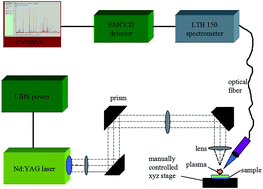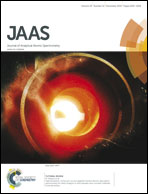A novel approach for the quantitative analysis of multiple elements in steel based on laser-induced breakdown spectroscopy (LIBS) and random forest regression (RFR)
Abstract
A novel method based on laser induced breakdown spectroscopy (LIBS) and random forest regression (RFR) was proposed for the quantitative analysis of multiple elements in fourteen steel samples. Normalized LIBS spectra of steel with characteristic lines (Si, Mn, Cr, Ni and Cu) identified by the NIST database were used as analysis spectra. Then, two parameters of RFR were optimized by out-of-bag (OOB) error estimation. The performance of the calibration model was investigated by different input variables (the whole spectral bands (220–800 nm) and spectra feature bands (220–400 nm)). In order to validate the predictive ability of the multiple element calibration RFR model in steel, we compared RFR with partial least-squares (PLS) and support vector machines (SVM) by means of prediction accuracy and root mean square error (RMSE). Thus, the RFR model can eliminate the influence of nonlinear factors due to self-absorption in the plasma and provide a better predictive result. This confirms that the LIBS technique coupled with RFR has good potential for use in the in situ rapid determination of multiple elements in steel and even in the field of metallurgy.


 Please wait while we load your content...
Please wait while we load your content...